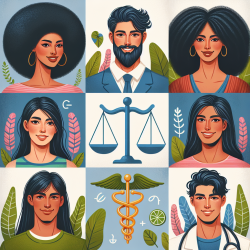Understanding Hair Discrimination and Its Implications
Hair discrimination, often referred to as hair bias or hair racism, manifests as negative stereotypes and attitudes toward natural or Black textured hairstyles. This form of racial discrimination has significant implications on the health and well-being of individuals, particularly those of African descent. The recent research paper titled The Person Beneath the Hair: Hair Discrimination, Health, and Well-Being explores these effects in depth, providing valuable insights for practitioners.
The Health Impact of Hair Discrimination
Hair discrimination affects both mental and physical health. It can lead to stress, anxiety, and self-esteem issues, as individuals may feel pressured to conform to Eurocentric beauty standards. This stress is compounded by societal and workplace policies that often discriminate against natural hairstyles. Physically, the use of harsh chemicals and heat treatments to alter natural hair can cause burns, hair loss, and other health issues.
Implementing Research Outcomes in Practice
Practitioners can improve their skills by integrating the findings from this research into their practice:
- Educate and Advocate: Raise awareness about the negative effects of hair discrimination and advocate for inclusive policies in schools and workplaces.
- Support Clients: Provide a safe space for clients to discuss their experiences with hair discrimination and its impact on their mental health.
- Promote Self-Acceptance: Encourage clients to embrace their natural hair and identity, fostering self-confidence and resilience.
- Engage in Further Research: Stay informed about the latest research on hair discrimination and its effects to continuously improve your practice.
The Role of the CROWN Act
The Creating a Respectful and Open World for Natural Hair (CROWN) Act is a legislative effort to combat hair discrimination. Passed in several states, it prohibits discrimination based on hair texture and protective hairstyles in workplaces and schools. Practitioners should be familiar with this legislation to better support their clients and advocate for policy changes.
Conclusion
Hair discrimination is a pervasive issue with far-reaching health implications. By understanding and implementing the outcomes of the research on hair discrimination, practitioners can better support their clients and contribute to a more inclusive society. To read the original research paper, please follow this link: The Person Beneath the Hair: Hair Discrimination, Health, and Well-Being.










